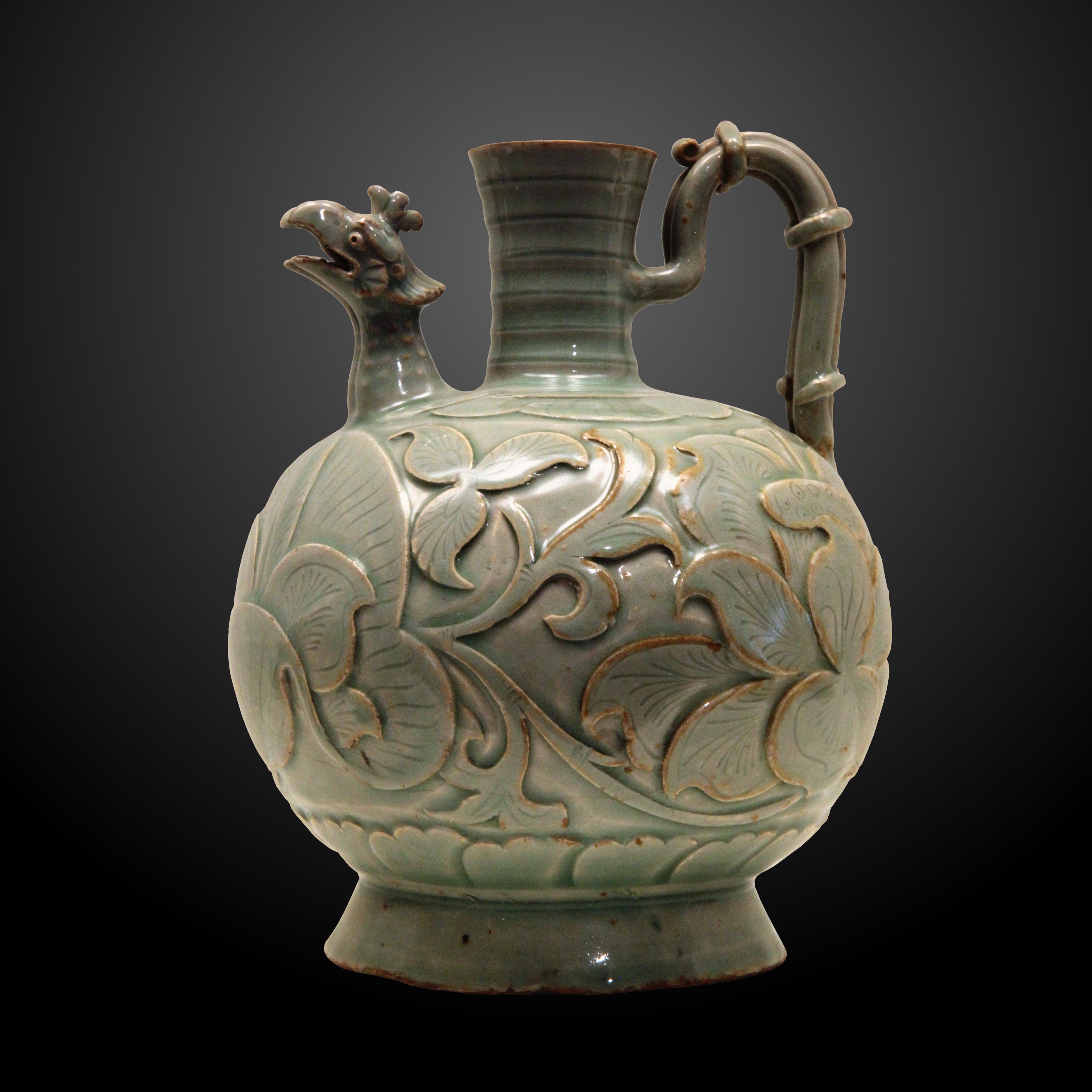Today I would like to share with you this Chinese pouring pot. This kind of ceramic is called Celadon, possibly after the name of a fictitious character from a 17th century French novel, L’Astrée, in which Céladon the shepherd wore pale green (aqua) coat.
Celadon pottery is a blue-green (aqua) stoneware due to the presence of iron oxide. This pouring pot has a deeply carved pattern and is soaked in a liquid glaze. It was fired for several hours at 1250° C (2280° F) to achieve this particular color, typical of the city of Yaozhou in the Chinese region of Shaanxi.
This piece is decorated with a peony pattern, and is considered as a masterpiece of the Northern Song dynasty (between 960 and 1127). This dynasty enjoyed a refined and monochrome ceramic style.
The phœnix spout is an Iranian pattern that shows the relation between empires through the silk roads. The phœnix is the symbol of the Chinese empress. Therefore this piece carried a lot of meanings in 10th century China.
- Coraline Méric
P.S. Get a crash course on ancient Greek pottery terms here!


 Unknown Artist
Unknown Artist